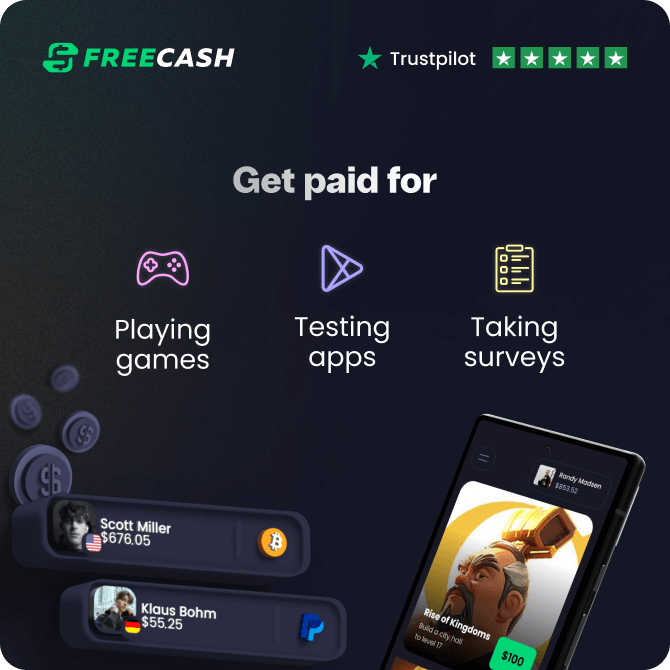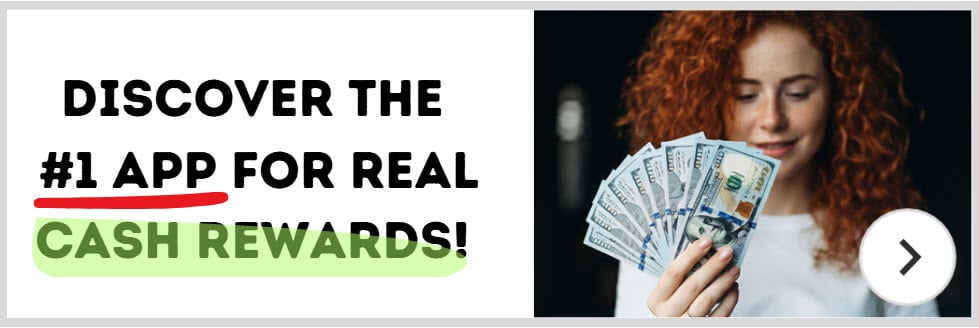 Welcome to my Coin Tile review!
Welcome to my Coin Tile review!
If you’ve spent any time scrolling through mobile game ads lately, you’ve probably come across something like this:
“Play for 10 minutes and get $40!”
“Cash out $5 instantly — no tricks!”
“Make $2,000 a month from a simple, fun puzzle game!”
It sounds like a dream, right? The kind of easy money that makes you question why you’re still working a regular job.
The latest contender in this fantasy genre is Tile Coin, a tile-matching puzzle game developed by Live Earth Maps & GPS Navigation from Pakistan.
It has over 1 million installs on the Play Store, which might initially seem impressive, but you realize there’s not a single user review.
Why? Because it’s still listed as early access, a clever trick many developers use to dodge ratings and avoid scrutiny.
But don’t worry. That’s what we’re here for.
So, is it legit or fake? Let’s find out!
Before we expose this game, here’s something tangible — my favorite app that pays!
👉 Try it here and thank me later!
What is Tile Coin?
Tile Coin looks like your standard match-3 puzzle game on the surface.
The core mechanic? Tap and transfer tiles from a grid into a display bar, and they’re eliminated when you match three of the same kind.
Simple and addictive — a concept that’s worked for years.
But here’s where it gets fishy.
The game doesn’t market itself as a puzzle challenge or a time-killer. Its main appeal is money.
Completing these easy tile-matching levels will earn real cash rewards.
The moment you download the game, you’re greeted with a virtual wallet that starts filling up fast — $10 here, $30 there — all while doing something as trivial as matching tiles.
According to the ads, you can withdraw rewards to PayPal, Amazon, and MasterCard and even choose options based on your country.
Sounds… too good to be true?

This reward platform is going viral! Cash out via PayPal, Visa, Gift Cards, and in-game currencies - Click here to find out how to generate an extra $10+ per day!
How Does Tile Coin Work?
Let’s talk gameplay mechanics first.
Tile Coin gives you limited space in the display bar — and that’s intentional.
It adds a slight challenge, but mainly, it builds tension and creates moments where you almost complete a level, only to mess up and need a “second chance.”
And how do you get that second chance? You guessed it — watching an ad.
That’s where the true engine of this game starts to kick in.
Almost every button in the game—”Collect,” “Multiply,” “Retry”—directs you to another video ad.
These aren’t brief banners, either. You’re forced to watch these full-length video ads to keep progressing or claim rewards.
In some moments, it even shows ads disguised as rewards, like other fake cash apps (Classic Quiz, for example) that promise $500 for identifying the capital of the UK.
The strategy is obvious: create a cycle of tiny fake rewards and huge ad exposure. You’re never paid real money, but the developer gets paid every time you watch an ad.
It’s not a game. It’s a monetization trap.
Does Tile Coin Really Pay?
No, it doesn’t work. Here’s exactly how they deceive you:
First, they hook you up with fast, early rewards. In the initial levels, you “earn” $10, $20, or even $30. This triggers a dopamine rush, convincing you that you’re on a promising path to easy money.
However, the truth emerges with the payout threshold. You soon learn you need $300 to cash out.
That’s the trap. Until you hit that amount, your balance remains nothing more than a tantalizing number on the screen.
Next, the rewards start shrinking. As you approach the $300 goal, your earnings dwindle—from $10 per task to $1 and eventually to mere cents—meanwhile, the number of ads you’re required to watch skyrockets.
This leads to an exhausting ad-watching loop. The further you progress, the more ads you must endure to earn each dollar.
Consequently, the game deliberately slows your progress, forcing you to generate more ad revenue—for the developer, not for you.
Worst of all, there’s no legitimate payout system. There’s no real withdrawal process, even if you dedicate hours to reach $300.
Your “balance” isn’t actual money; it’s merely bait to keep you engaged.
Despite flashy promises of rewards through platforms like PayPal or Amazon gift cards, there’s no evidence anyone has ever been paid.
No reviews, no user testimonials, no screenshots of confirmed payments—not even a trace on social media. If that’s not a red flag, what is? It’s a glaring, undeniable warning.
The Shady Side of Early Access
Why would a game with over 1 million installs still be in early access? Easy: it lets developers hide reviews. That way, frustrated users can’t leave warnings like:
“This is a scam; don’t waste your time!”
“Fake cash game — they never pay!”
“I watched 100 ads and still got nothing.”
With early access, they sidestep the entire feedback loop. They stay invisible to criticism while racking up ad revenue from hopeful players.
When people finally catch on, they can rebrand and release the same game under a new name.
Can You Trust the Developer?
Tile Coin was developed by Live Earth Maps & GPS Navigation, a company known for unrelated utility apps—not games. That’s already a red flag.
This means that they likely pivoted to gaming purely for monetization.
In the Play Store listing, they claim that “data is encrypted in transit,” but here’s the kicker: they don’t say a word aboutthe cash rewards in the game description.
Why would a game built around earning real money not mention it anywhere officially?
It’s simple. They know that Google doesn’t tolerate misleading financial promises, so they market one story in ads and stay silent in the app store.
That way, when people complain, they can always say:
“Oh, we never said anything about earning money.”
Clever. Dishonest but clever.
What’s the Real Risk?
Aside from wasting your time — and believe me, you will waste a lot of time — there’s a more serious issue:
Your data.
While they promise encryption, there’s no way to know how they handle your information.
And with millions of players lured in by false promises, this is a goldmine for data harvesting.
You’re giving away your time, attention, and possibly your personal data — all for rewards that don’t even exist.
Does Tile Coin Pay?
Alright, let’s cut to the chase. Does Tile Coin actually put real cash in your pocket?
Based on everything we’ve seen, the answer is a booming, undeniable, drum-roll please… NO.
Think of that dazzling in-game balance like monopoly money – fun to look at, utterly useless in the real world.
Here’s the not-so-funny truth: the game hooks you with big, fast “rewards” at first. “$30 just for matching these cute little squares? Wow!”
It feels great, right? Like you’ve cracked the code to easy street. But then you hit the brick wall: that sky-high $300 cash-out goal. Good luck ever seeing it.
As you get closer (or try to!), the “earnings” shrink smaller than your chances of actually getting paid.
You’ll be earning pennies while watching enough ads to fund the developer’s next holiday. It’s less a game and more an ad-watching marathon disguised as a job.
The “Early Access” status? That’s just the developer playing hide-and-seek with negative reviews.
By staying in early access, they conveniently dodge all the “Waste of time!” and “Fake!” comments. This is clever, if a bit cheeky.
So, don’t fall for the flashy ads or the quickly growing in-game balance. Tile Coin isn’t your golden ticket to easy money.
It’s just another app that uses fake cash promises to get you to watch ads. Save your time, save your data, and save your hopes for a quick payout.
Conclusion
To sum up, Tile Coin, despite its enticing ads and shiny virtual coins, is a classic example of a fake cash game.
It promises substantial earnings for simple gameplay but relies heavily on ad revenue generated by players chasing an effectively unreachable payout threshold.
Playing Tile Coin is, by all indications, a waste of time if your goal is to earn money.
Your efforts and the time spent watching ads will primarily benefit the developer, not your bank account.


